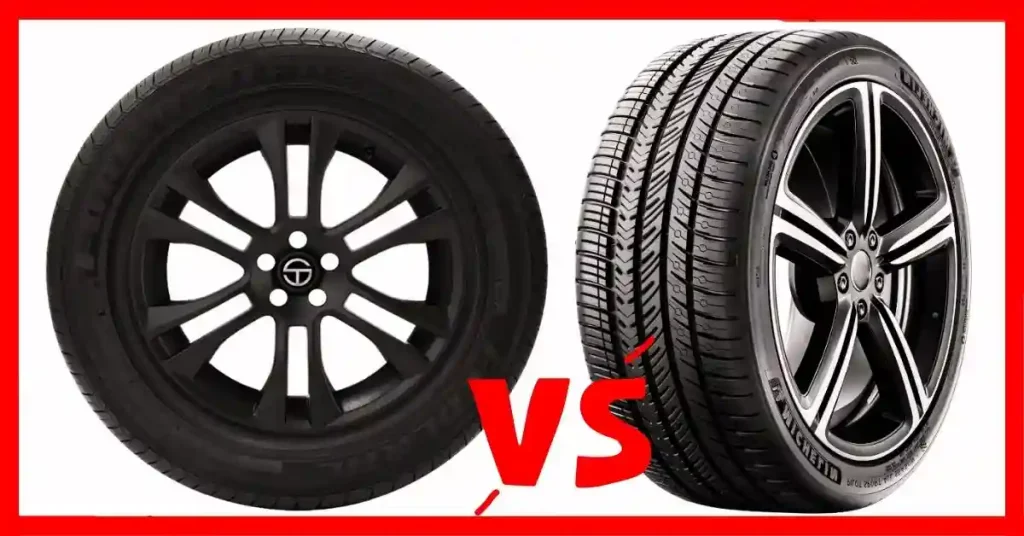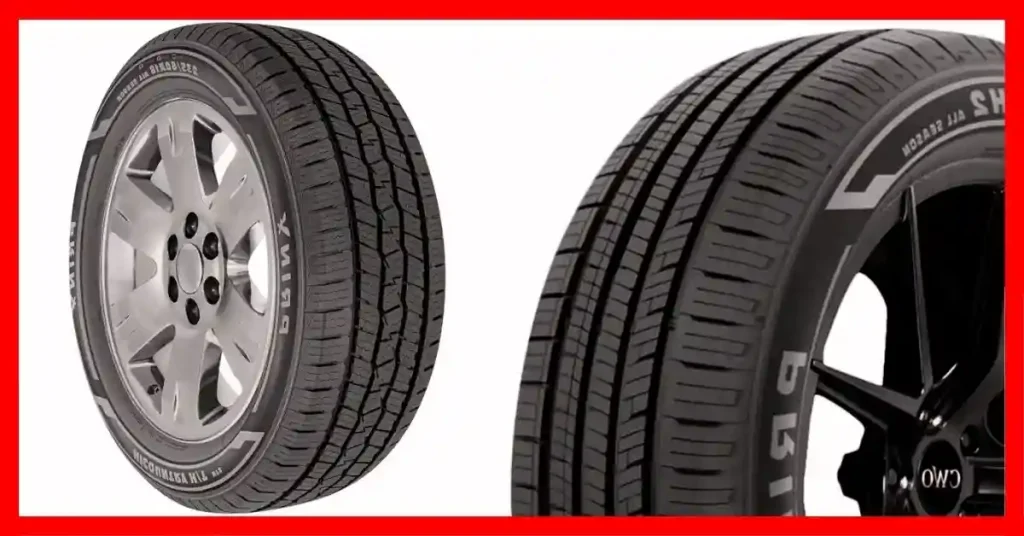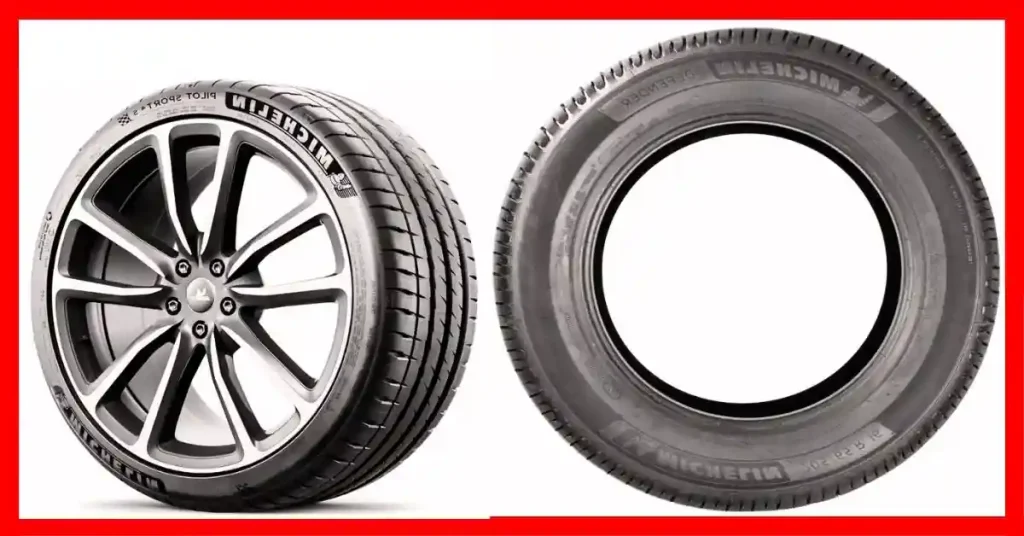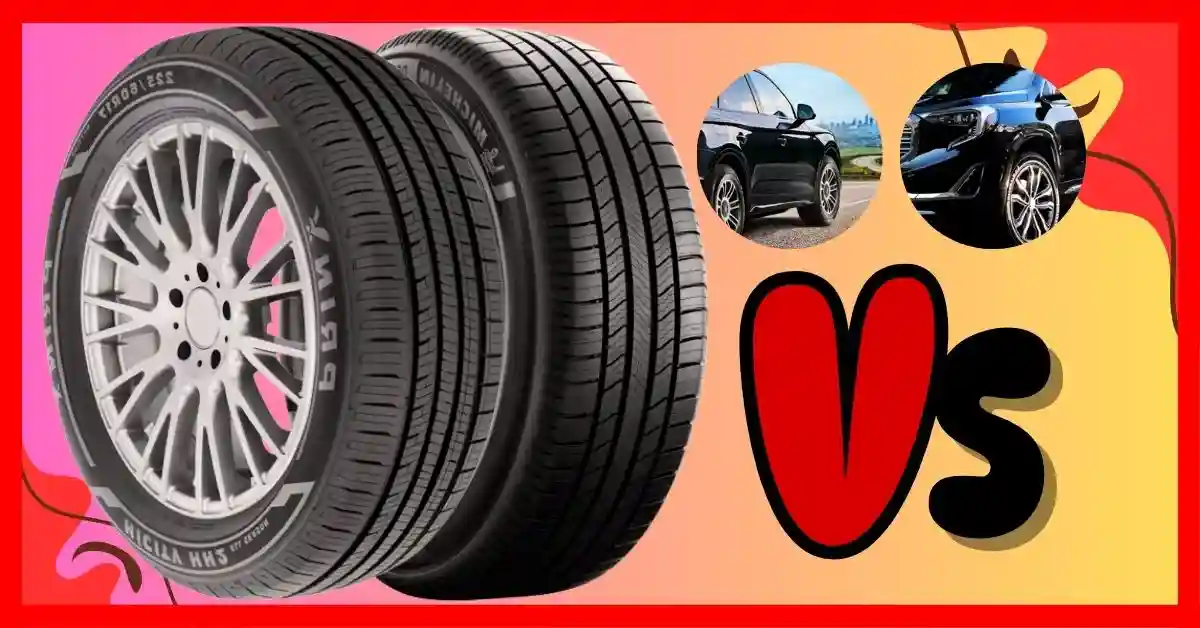I’ve used both Prinx Tires vs Michelin. One costs less. One is known for top quality. I wanted to see if the gap was real.
So I tested them myself. I drove in sun, rain, and cold. I checked the ride, grip, and wear. And I paid close attention to how each tire felt.
If you’re stuck between the two, this guide is for you. I’ll share what I learned, what surprised me, and which tire might fit your life best. Let’s get into it.

👉🏿👉🏻 Check Latest Price and Offer at Amazon 👈🏻👈🏿
👉🏿👉🏻 Check Latest Price and Offer at Amazon 👈🏻👈🏿
Quick Overview – What Sets Prinx and Michelin Apart?
I tried both Prinx and Michelin tires on my own car. And let me tell you—they feel very different.
Prinx tires are budget-friendly. They cost less, but still give a smooth ride. I bought them when I needed a quick, low-cost option. To my surprise, they worked fine. They were quiet, had decent grip, and did the job for short trips around town.
Michelin tires, on the other hand, are top-tier. I’ve driven on them many times. They last long, feel soft on the road, and stay quiet even on long drives. You can tell right away—they’re built with care.
So, what’s the big difference?
Michelin wins on quality and comfort. But Prinx offers solid value for less money. If you drive a lot or need strong grip in all seasons, go with Michelin. If you just want a safe set for daily errands, Prinx works.
Here’s a quick side-by-side look:
| Feature | Prinx Tires | Michelin Tires |
| Price | Low-cost | High-end |
| Warranty | Around 40k–60k miles | Up to 90k miles |
| Ride Feel | Smooth enough for short drives | Quiet, soft, and stable |
| Best For | City driving and short commutes | Long trips, all seasons, and fuel savings |
In short:
Prinx is a great deal for the price.
Michelin is built to last—and it shows on the road.
My Real-World Experience with Both Brands
🛻 What I Noticed Driving on Prinx Tires
I bought Prinx tires because I wanted to save money. A friend told me they were decent, so I gave them a try. I picked the Prinx HiCity HH2 for my small SUV.
At first, I was nervous. I didn’t expect much. But after a few drives around town, I was surprised. The ride was smooth, and the road noise was not bad. Not silent—but not loud, either. Prinx tires gave me a quiet and safe ride for a low price.
On dry roads, they gripped well. In light rain, they still felt steady. I didn’t slide or skid. I wouldn’t race on them, but for daily trips, they worked just fine.
I drove with them in light winter weather, too. Just a bit of snow and slush. They held on unless I braked too hard. They’re not built for snow, but they got the job done.
After 8,000 miles, the tread still looked good. I checked the air and rotated them on time. No cracks. No weird wear. For daily city driving, Prinx tires have been solid so far.

👉🏿👉🏻 Check Latest Price and Offer at Amazon 👈🏻👈🏿
My Experience Driving on Michelin Tires
Now let’s talk Michelin. I’ve used both the Defender T+H and CrossClimate2. They cost more—but feel better right away.
The ride was quiet. Less bounce. Less noise. Just smooth driving. Michelin tires make the drive feel calm and steady.
On wet roads, they held tight. I drove through rain and even some snow. The grip was strong the whole time. The CrossClimate2 handled snow better than I thought. I didn’t even need winter tires.
I also got better gas mileage. About 1.5 to 2 more miles per gallon. Over time, that saved me money. Michelin tires helped my car use less fuel.
I’ve driven over 40,000 miles on them. They still look great. The tread is holding up well. No issues so far. If you want comfort and long life, Michelin is worth the extra cost.

👉🏿👉🏻 Check Latest Price and Offer at Amazon 👈🏻👈🏿
Price Comparison – Budget vs Premium
Let’s face it—tires are not cheap. That’s why I gave Prinx a try. I was short on cash and needed new tires fast. I found a full set for around $280 to $320. That’s much less than most big-name brands.
If you’re on a tight budget, Prinx gives you good value without feeling risky.
The ride felt smooth. No loud road noise. They held up well for daily trips. For the price, I was happy.
In my experience, Prinx tires worked great for basic driving without costing much.
Now, Michelin tires cost more. A lot more. My set of Defender T+H was about $140 per tire. That’s over $550 for all four. But you feel the difference. The ride is smooth. The tires last longer.
Michelin tires cost more upfront—but they last longer and ride better.
I also saved gas. With Michelin, I got better mileage over time. That helps balance out the price.
If you drive often, Michelin may save you money in the long run.
So, are they worth it? I’d say yes—if you drive a lot or take long trips. But if you just need safe tires for short drives, Prinx is a smart choice.
Pick Michelin for long-term use. Pick Prinx if you want to save now and still drive safe.
All-Season Performance – Prinx vs Michelin
Let’s start with wet roads. I drove on both brands during spring showers and after heavy rain. Michelin tires had stronger grip—no skids, even on sharp turns. The CrossClimate2 cut through puddles without much splash or slide. Prinx held up okay too, but I did feel a little slip when stopping fast.
Michelin offers better wet traction, but Prinx still feels safe for everyday rain.
Light snow is where I noticed a bigger gap. On cold mornings with slush and icy patches, Michelin gave me more control. The tread held the road, even when I braked hard. Prinx managed fine in thin snow, but I wouldn’t trust them in deeper piles or on hills.
If you live somewhere with real winters, Michelin is the safer pick.
Summer was smooth for both brands. On hot pavement, neither tire overheated or wore fast. I took a long road trip with the Prinx HiCity HH2 during a heatwave, and the tread stayed solid. Michelin, as expected, handled the heat with ease.
Both Prinx and Michelin perform well in summer heat with proper care.
Across all seasons, Michelin gave me the most balanced feel. The ride was quiet, the grip steady, and the wear slow. Prinx surprised me with how well it managed daily driving—even when the weather shifted.
Michelin is the all-weather champ, but Prinx holds its own for drivers on a budget.
Where Are Prinx and Michelin Tires Made?
Prinx tires are made in China and Thailand. The brand comes from a company called Prinx Chengshan. It started in China and grew fast. Many of its tires are now built in Thailand, which is known for good tire factories.
Most Prinx tires in the U.S. come from these two countries.
I checked the side of my Prinx tire. It said, “Made in Thailand.” That made me feel better. Thai-made tires are often better than very cheap ones from unknown brands.
If you see “Made in Thailand,” that’s a good sign for budget tires.
Michelin tires are made in the USA and around the world. It’s a French company, but it has big factories in the U.S.—in states like South Carolina, Alabama, and Indiana. I’ve bought Michelins stamped “Made in USA,” and they’ve always been top-notch.
Michelin builds many of its tires in America, which helps with both quality and fast delivery.
Michelin also has plants in Europe, Canada, and Asia. But no matter where they’re made, the quality is the same. The company controls every step.
Michelin’s global reach helps keep their standards high across the board.
Where a tire is made does matter. It affects quality, price, and even how fast you get a replacement.
Prinx uses lower-cost places to stay cheap. Michelin builds in more places—but keeps control.
Brand Reputation & Customer Reviews
Prinx tires are not well-known, but people are starting to notice. Many buyers online said the ride was smooth. A few were surprised at how quiet they were. I saw good reviews on Amazon and forums.
Most users say Prinx gives good value for the money.
Still, there are some downsides. A few drivers said the tread wore out fast. Others had trouble finding a shop that carried them or accepted the warranty.
Prinx tires work best for short trips and light daily use.
Michelin is a trusted name worldwide. They’ve been making tires for over 100 years. I’ve used them on road trips and city drives. The ride always felt smooth and quiet.
Michelin tires are known for comfort, grip, and long life.
Lots of people online say the same. On Tire Rack and other sites, Michelin often gets top scores. Experts and users both like the way they handle in rain and dry weather.
Michelin tires win high marks in tests and reviews.
If you want a low-cost tire that gets the job done, Prinx can work. But if you want top quality and peace of mind, go with Michelin.
Prinx is a smart choice for tight budgets. Michelin is the better choice for long-term use.
Final Verdict – Which One Should You Choose?
If you’re on a tight budget, Prinx is a solid pick. I’ve used them for daily errands, short drives, and weekend trips around town. They held up well and didn’t give me any trouble.
Choose Prinx if you want a low-cost tire that gets the job done.
City drivers or folks who don’t rack up miles fast will be fine with Prinx. You’ll save money and still get a decent ride. Just know they might not last as long or stay as quiet over time.
They’re great for short commutes or backup vehicles.
Now, if you care about the long game, Michelin is worth it. I’ve driven across states on Michelin tires—through rain, heat, and even light snow. They stay quiet, ride smooth, and don’t wear out fast.
Michelin shines when it comes to comfort and long-term value.
They cost more upfront, but you’ll likely change them less often. Plus, they help with fuel use thanks to lower rolling resistance.
For road trips, harsh weather, or long drives, Michelin is the better pick.
So here’s my take: Go with Prinx if you want to save and don’t drive far. Go with Michelin if you want peace of mind, comfort, and top-tier performance.
FAQs – Prinx Tires vs Michelin
Are Prinx tires good for daily driving?
Yes. Prinx tires work well for daily driving. They give good grip and comfort. They are a smart choice if you drive mostly in the city.
Is Prinx a good tire brand overall?
Prinx is a budget brand. Many drivers say it offers good value. It may not be as fancy as premium brands. But it is reliable for its price.
Where are Prinx tires made?
Prinx tires are made in China and Thailand. The brand is part of Prinx Chengshan. This company focuses on making affordable tires.
Are Michelin tires better than other brands?
Michelin is a top tire maker. Their tires are safe and last long. They work well in all kinds of weather. They cost more but save money over time.
Which tire brand offers the best value?
It depends on your needs. Prinx is good for short-term use and budgets. Michelin is better for long drives and durability.
What tire brands are owned by Michelin?
Michelin owns brands like BFGoodrich, Uniroyal, and Kleber. They offer different styles and prices. But all share good quality.
Are Prinx tires sold in the USA?
Yes. You can buy Prinx tires in the USA. They are sold online and in many tire shops. Many drivers choose them for value.
Extra Tips from My Experience
I’ve driven on both Prinx and Michelin tires for months. I tested them on smooth highways, rough city roads, and during rainy days. I noticed how each one felt—how much noise they made, how well they gripped the road, and how smooth the ride was. Real-world driving showed me things I never found on the product page.
Daily driving tells you more than tire specs ever could.
To make sure my test was fair, I rotated the tires every 5,000 miles. That kept the wear even and the ride smooth. I also checked the air pressure once a month. It took just two minutes with a small $10 gauge. That small habit helped the tires last longer and drive better.
Even the best tires wear out too soon if you skip basic care like pressure checks and rotation.
One day, I hit a deep pothole downtown. A week later, the car started drifting to the right. Sure enough, the alignment was off. I got it fixed, and the tires started wearing evenly again. That moment taught me how important alignment is—even more so on newer tires.
Keeping your wheels aligned protects your tires and saves you money in the long run.
Here’s the routine I follow with every tire, no matter the brand:
- Rotate every 5,000 miles (or during oil changes)
- Check air pressure monthly
- Look at tread depth before long trips
- Get an alignment once a year or after big bumps
Skipping these steps once cost me. I ignored air pressure for two months, and my front tires wore down fast. I had to replace them early, which hit my wallet hard.
A few small habits—like checking pressure and rotating often—can help any tire last longer and drive better.
Whether you’re rolling on Prinx or Michelin, good care makes the real difference. It’s not about price. It’s about how you treat your tires after they hit the road.
Where to Buy Prinx and Michelin Tires in the USA
I’ve bought both Prinx and Michelin tires in the past. Here’s what I learned.
Prinx tires can be hard to find in local shops. I checked three near me—none had them. So, I went online. There were more sizes and better deals.
Best tip: If you want Prinx tires, shop online.
Michelin tires were much easier to get. I saw them at Costco, Walmart, and Discount Tire. But I still looked online first. Sites like Tire Rack and Amazon had some great prices.
Smart move: Check online even if you like local stores.
Before you buy, look at the warranty. Michelin gives long ones—some up to 80,000 miles. Prinx has shorter ones, but that’s fair for the lower cost.
Keep in mind: Michelin tires may last longer and offer more peace of mind.
If you buy online, make sure the size is right. Once tires are mounted, you can’t send them back. I once ordered the wrong size by mistake. Good thing I checked before install.
Easy fix: Always check your tire size before you buy.
Here are the sites and stores I trust:
- Tire Rack – Big range, lots of reviews
- Discount Tire – Fast ship, price match
- Amazon – Quick and easy
- Costco – Good price with install
If you want Prinx, the best deals are online. For Michelin, pick the place that gives you the best value.
To Get More About Car Accessories Product You Can Visit Our Site. If You Found our Posts Helpful Leave a Comment Below

